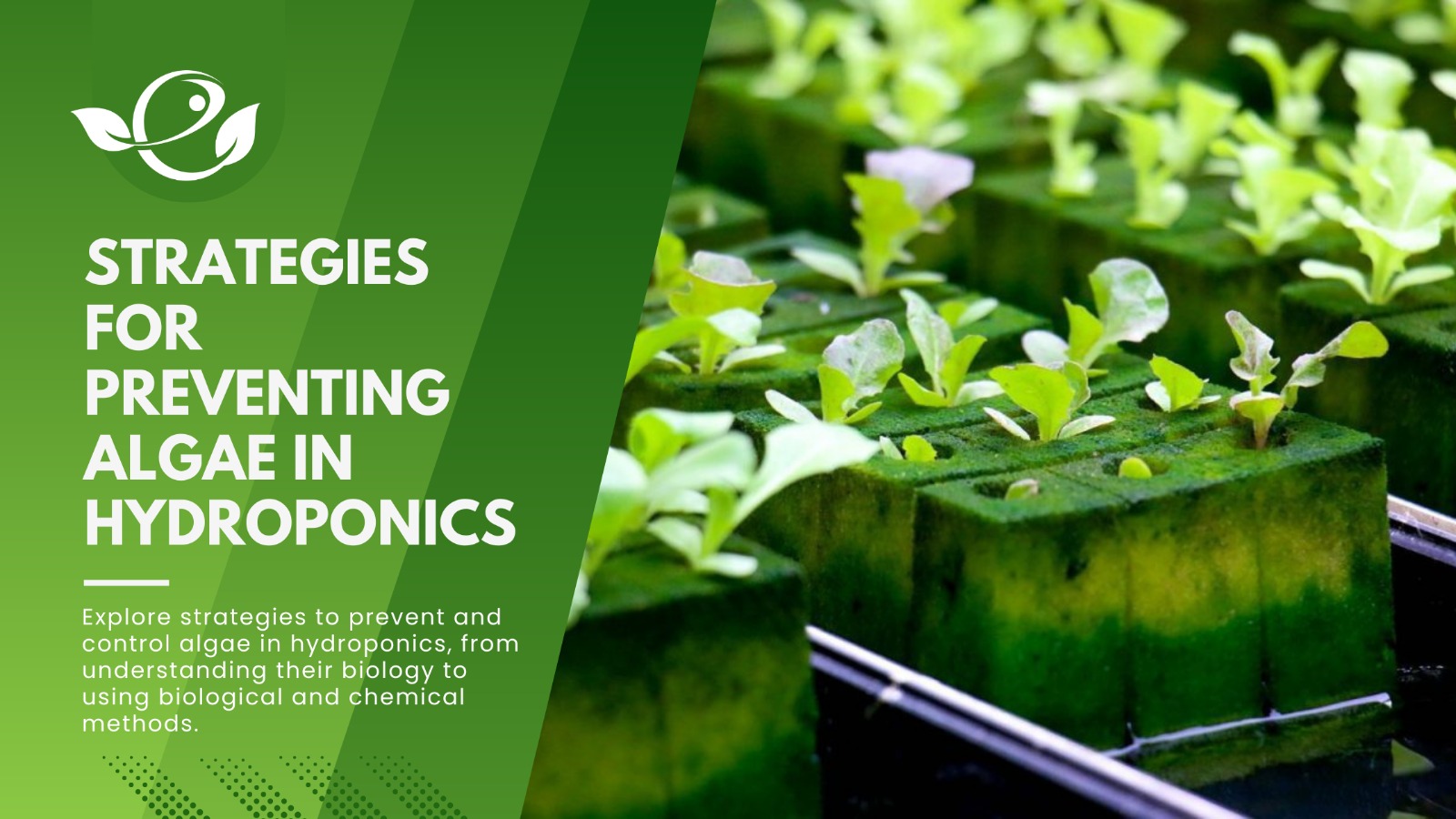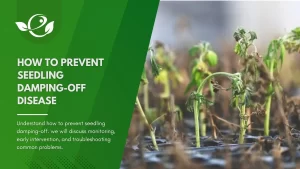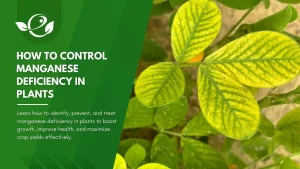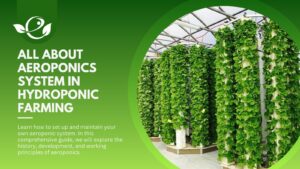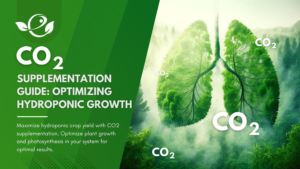Table of Contents
Hydroponics is a modern and innovative method of growing plants without the use of soil. Instead, plants’ roots are suspended in a solution filled with essential nutrients dissolved in water. This system provides an efficient, high-yield, and environment-friendly approach to gardening and farming.
However, like any agricultural practice, hydroponics also has challenges. One significant issue is the prevention of algae growth. Algae, although natural, can become detrimental to the health and growth of hydroponic plants, making their control and prevention crucial. In this blog post, we will dive deep into the problem of algae in hydroponics, its causes, signs, prevention, and control methods. We’ll also provide tips for regular monitoring and maintenance of your hydroponic system.
Understanding Algae: A Necessary Pre-Requisite
Understanding the nature, growth process, and impact of algae is key to managing their presence in hydroponic systems effectively.
What Are Algae?
Algae are simple, typically autotrophic organisms that belong to the Plantae kingdom. Autotrophic means they can produce their own food through photosynthesis, similar to plants. They range from unicellular organisms to large multicellular forms, like seaweeds. Algae are usually aquatic and thrive in both saltwater and freshwater environments. They come in a variety of colours — green, brown, red, and blue-green — but the most common type found in hydroponic systems is green algae.
The Algae Life Cycle
The life cycle of algae consists of three basic phases:
- The Growth Phase: When conditions are favourable — plenty of light, nutrients, and water — algae spores start to germinate and grow rapidly. This growth is exponential, with each alga dividing and multiplying to form more algae.
- The Stationary Phase: Once nutrients become less available, the algae population reaches its peak and then levels off.
- The Death Phase: In this phase, the algae population begins to decline due to a lack of nutrients, changes in temperature, or other unfavourable conditions. The dead algae can release toxins harmful to plant roots in a hydroponic system.
Effects of Algae Growth on Hydroponic Plants
Algae in a hydroponic system can affect plant growth in several ways:
- Competition for Nutrients and Light: Algae and plants compete for the same resources. The fast-growing algae can deprive plants of essential nutrients and light, slowing their growth and productivity.
- Clogging the System: Algae can form a dense mat, clogging the water pumps, pipes, and other system components, which can hinder the supply of nutrients to plants.
- Lower Oxygen Levels: Algae consume oxygen, especially in the dark. High levels of algae can lead to low oxygen levels in the water, affecting root health and function.
- Pathogen Growth: Dead algae can serve as food for pathogens, leading to disease outbreaks in the system.

Causes of Algae Growth in Hydroponic Systems
Understanding the causes of algae growth can help in implementing effective prevention and control measures. The four primary causes are excessive light exposure, overfeeding and nutrient imbalance, poor system cleanliness and maintenance, and inadequate water and air circulation.
- Excessive Light Exposure
Light is essential for photosynthesis, a process that both plants and algae use to produce their own food. However, excessive light exposure, especially in the nutrient solution, can stimulate and speed up algae growth. Transparent or semi-transparent containers are particularly prone to this problem as they allow light to penetrate, providing a perfect environment for algae to thrive.
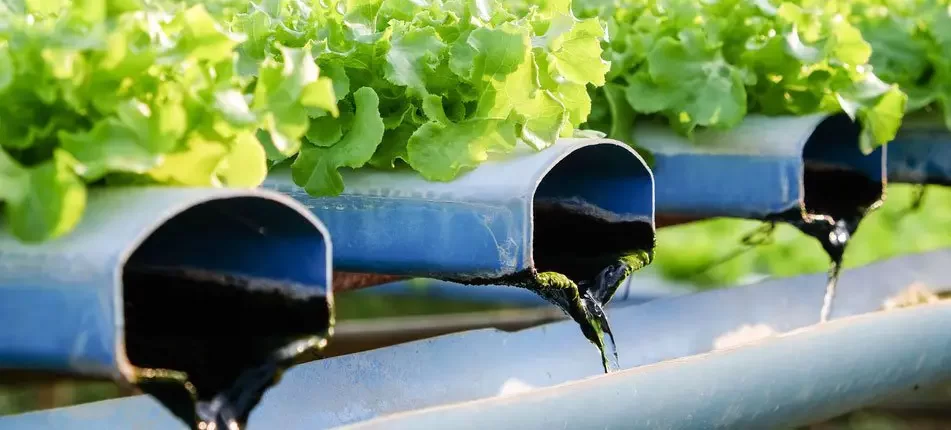
- Overfeeding and Nutrient Imbalance
Just like plants, algae thrive in nutrient-rich environments. A hydroponic system with too high a concentration of nutrients — either due to overfeeding or poor nutrient management — can become a breeding ground for algae. The excess nutrients not taken up by the plants can serve as a food source for algae, promoting their rapid growth and proliferation.
- Poor System Cleanliness and Maintenance
Hydroponic systems require regular cleaning and maintenance to stay productive and healthy. If you neglect to clean your system, dead plant matter, dust, and other debris can accumulate. These materials can decompose in the nutrient solution, providing another source of nutrients for algae. Furthermore, unclean systems can harbour dormant algae spores, which can start to grow when conditions are favourable.
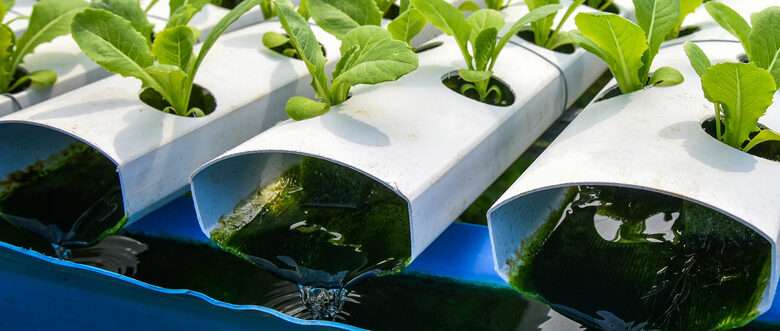
- Inadequate Water and Air Circulation
Proper water and air circulation are key to maintaining a healthy and productive hydroponic system. Poor circulation can lead to stagnant water and low oxygen levels, providing a perfect environment for algae growth. Stagnant water also allows nutrients to build up in certain areas, further promoting algae proliferation.
Signs of Algae Growth in Hydroponic Systems
Knowing the early signs of algae growth in your hydroponic system can help you take prompt action, potentially saving your plants and system from severe damage. Here are some key indicators of algae presence:
- Change in Water Color
The most noticeable sign of algae growth in your hydroponic system is a change in water colour. The usually clear water may start turning green due to the presence of green algae. In some cases, you might even notice a green film developing on the water’s surface.
- Unpleasant Odor
When algae proliferate, they often create an unpleasant, swampy smell. The smell is a result of both live and dead algae in the system. If you start noticing a foul smell coming from your hydroponic system, it’s a good indicator that algae are present and growing.
- Slime Formation
Algae growth can lead to the formation of a slimy layer or biofilm on various surfaces of your hydroponic system, such as the inside walls of the reservoir, grow trays, or even on the roots of your plants. This layer is often green but can also be other colours depending on the algae species present.
- Deteriorating Plant Health
If you observe that your plants are becoming weak, yellow, or stunted without any apparent disease or pest issue, it could be a sign of algae infestation. Algae compete with plants for nutrients and oxygen, leading to nutrient deficiency and poor oxygen availability for the plants.
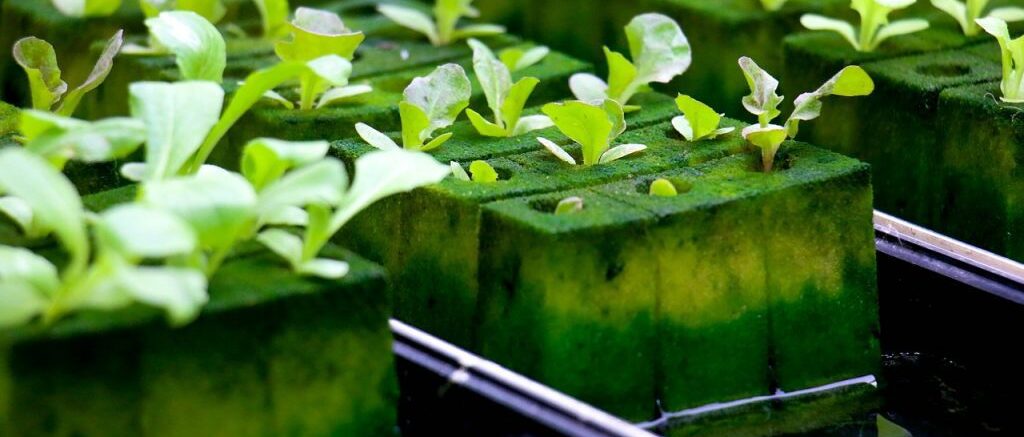
Preventive Measures Against Algae Growth
Prevention is always better than cure, and this is particularly true for managing algae in hydroponics. Here are some measures you can take to prevent algae growth:
Limiting Light Exposure
Light is a critical factor in algae growth. Limiting light exposure to your nutrient solution can significantly reduce the chances of algae growth.
- Use Lightproof Materials
Consider using lightproof materials for your hydroponic setup. Use black or opaque reservoirs, trays, and tubing to prevent light from reaching the nutrient solution.
- Cover Your Reservoirs
Always keep your nutrient reservoirs covered. A well-fitted lid can effectively block light while also reducing the chances of contaminants getting into the solution.
Optimal Nutrient Management
Careful management of nutrients can help prevent an environment conducive to algae growth.
- Feed Plants Judiciously
Feed your plants only as much as they need. Overfeeding can lead to nutrient build-up in the water, providing a food source for algae.
- Monitor and Adjust Nutrient Concentrations
Regularly monitor the nutrient concentrations in your system. Use a TDS (Total Dissolved Solids) meter for this purpose. If nutrient levels are too high, consider diluting the solution or changing it completely.
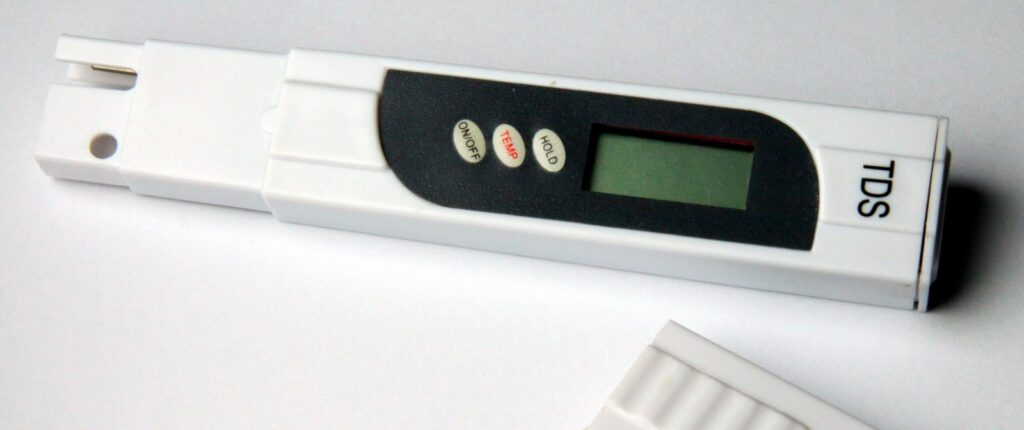
Maintaining System Cleanliness
Keeping your hydroponic system clean is crucial for preventing algae and other issues.
- Regular System Cleaning
Develop a routine to clean your system. This routine should involve removing plant debris, wiping off any biofilm, and occasionally flushing and cleaning the entire system.
- Sterilize Equipment
Sterilize your equipment between growing cycles to kill any algae spores or other potential pathogens. Use a mild bleach solution or hydrogen peroxide for this purpose.
Ensuring Good Water and Air Circulation
Proper water and air circulation can inhibit algae growth by maintaining an oxygen-rich environment.
- Use Air Stones and Water Pumps
Air stones and water pumps can help to keep the water in your system oxygenated and moving, making it less hospitable for algae.
- Regularly Change the Nutrient Solution
Changing the nutrient solution regularly can prevent the build-up of excess nutrients that feed algae. It also ensures the solution is oxygen-rich, which is unfavourable for algae growth.
Biological Methods for Controlling Algae
Biological control involves using living organisms to control pests or, in this case, algae. These methods are generally more environmentally friendly and sustainable than chemical methods.
Introduction to Biological Control
In the context of hydroponics, biological control can be achieved by introducing organisms into the system that naturally inhibit the growth of algae or directly consume them.
Beneficial Bacteria and Their Role in Preventing Algae Growth
Beneficial bacteria, such as Bacillus species, can be used to control algae. These bacteria produce substances that inhibit the growth of algae and other harmful microorganisms. Some beneficial bacteria can also consume algae directly.
Adding beneficial bacteria into your hydroponic system not only helps control algae but also promotes plant health by aiding nutrient cycling.
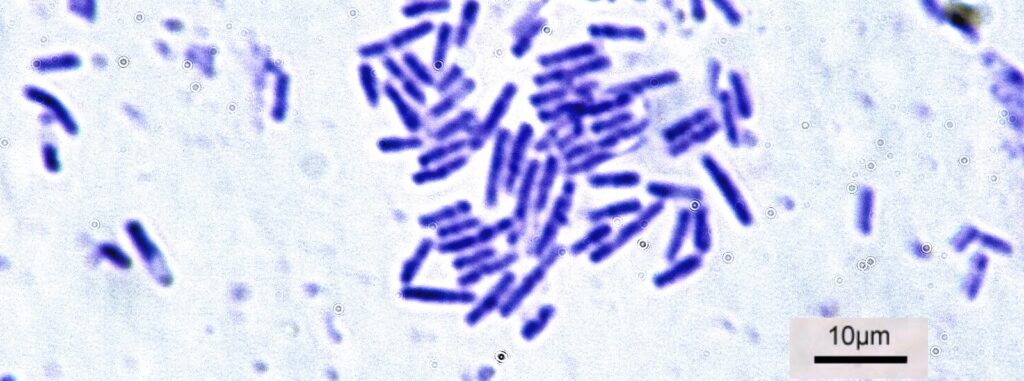
Other Beneficial Organisms such as Daphnia
Daphnia, also known as water fleas, are small crustaceans that feed on algae and are a natural method for controlling algae growth. They are especially effective in larger hydroponic systems with sufficient space for them to reproduce and survive.
However, using Daphnia requires careful management to ensure they don’t become a nuisance themselves. They should be used as part of an integrated pest management (IPM) strategy, where various methods are used together to control pests.
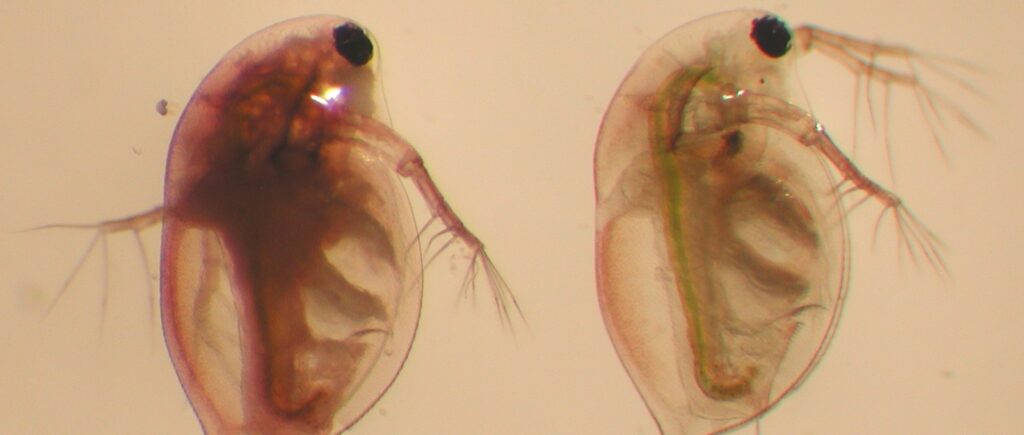
Chemical Methods for Controlling Algae
If biological methods are not sufficient to control algae growth, or in severe infestations, chemical control may be necessary.
Understanding the Need for Chemical Control
While prevention should always be the first step, sometimes algae growth becomes unmanageable. In such cases, chemical control can be an effective way to quickly reduce the algae population and bring the system back into balance.
Safety Precautions when Using Algaecides
Safety is paramount when using any form of chemical control. Always wear protective clothing and follow the instructions on the label closely. Avoid overuse of algaecides, as they can harm your plants and beneficial microbes in the system.
Popular and Effective Algaecides in the Market
There are various algaecides available in the market that can be used to control algae in hydroponic systems. Some popular options include copper-based algaecides, hydrogen peroxide, and quaternary ammonium compounds.
Each algaecide has its own advantages and drawbacks, so it’s essential to do your research and possibly consult with an expert before choosing an algaecide for your system.
Tips for Monitoring and Regular Maintenance of Hydroponic Systems
Keeping a close eye on your hydroponic system and maintaining it regularly is the best way to prevent and control issues, including algae growth.
Importance of Regular Inspection
Regular inspection of your hydroponic system can help you catch any issues early before they become serious problems. Check your plants for signs of nutrient deficiency or disease, inspect the water for signs of algae growth, and ensure all equipment is working correctly.
Keeping a Maintenance and Observation Diary
Keeping a maintenance and observation diary is a great way to stay on top of your hydroponic system’s health. Record any actions taken, such as cleaning the system, changing the nutrient solution, or adding beneficial bacteria. Also, note down any observations, like changes in plant growth, water color, or system smell.
This diary can help you spot trends over time, and can be an invaluable tool if you need to troubleshoot issues.
Regular Testing of Water Parameters
Testing the water parameters in your hydroponic system — such as pH, temperature, and nutrient concentration — should be part of your regular maintenance routine. This can help you ensure the system is always in optimal condition for plant growth and unfavorable for algae growth.
Various testing kits and meters are available to make this task easy.

Conclusion
Controlling algae in hydroponic systems can be challenging but is crucial for the success of your plants. Remember to prevent excessive light exposure, manage nutrients optimally, maintain system cleanliness, and ensure good water and air circulation. If needed, use biological or chemical methods to control algae growth. Regular inspection, maintenance, and testing of water parameters are also essential.
In hydroponics, as in many other things, prevention is indeed better than cure. By understanding and implementing these preventive measures, you can maintain a healthy, algae-free hydroponic system.
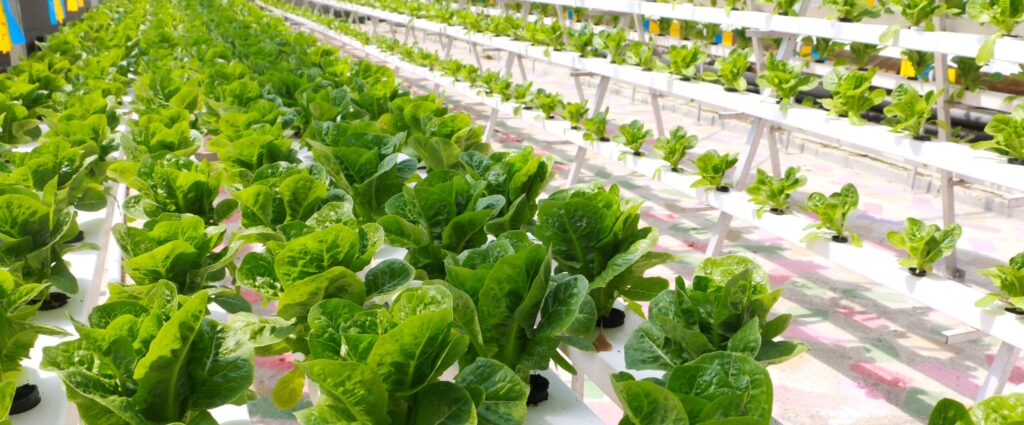
Frequently Asked Questions (FAQs)
1. What types of algae are commonly found in hydroponic systems?
Green algae are most commonly found in hydroponic systems, but you may also encounter blue-green algae (cyanobacteria), brown algae, or even red algae. Each type has its own growth characteristics and methods for control.
2. Can algae be beneficial to my hydroponic system?
In very small quantities, certain types of algae can be beneficial as they can help cycle nutrients and provide food for beneficial bacteria. However, in excess, they can outcompete your plants for nutrients and oxygen, damage your equipment, and even cause foul smells.
3. Can I use UV sterilizers to control algae in my hydroponic system?
Yes, UV sterilizers can be effective in controlling algae. They work by exposing the water to UV light, which kills the algae cells. However, keep in mind that UV sterilizers can also kill beneficial bacteria in your system.
4. How often should I clean my hydroponic system to prevent algae growth?
The frequency of cleaning depends on various factors, including the type of system, the plants you are growing, and the specific conditions in your growing environment. As a general rule, you should clean your system thoroughly between each crop cycle. Regular inspection and spot cleaning can be done as needed.
5. Is there any natural or homemade algaecide that I can use?
Hydrogen peroxide is a common household item that can be used as an algaecide. However, it should be used with caution, as high concentrations can harm your plants and beneficial microbes. Always do your research or consult with an expert before using any homemade algaecide.
6. How can I tell if my plants are suffering from nutrient deficiency due to algae competition?
Plants suffering from the nutrient deficiency may show a variety of symptoms, including yellowing or browning leaves, slow growth, and weak or thin stems. However, these symptoms can also be caused by other issues. If you notice any of these signs and also have algae in your system, it’s likely that the algae are at least partly to blame.
7. Is it possible to completely eliminate algae from my hydroponic system?
Completely eliminating algae from your hydroponic system is unlikely due to the presence of algae spores in the environment. However, by using a combination of preventive measures and control methods, you can keep algae growth to a minimum and prevent it from becoming a problem.
